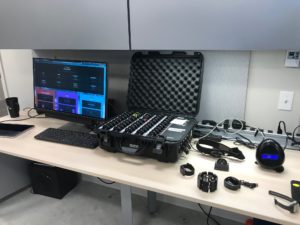Lockheed Martin [LMT] is working on new “human-machine teaming” sensor technology that aims to track performance and increase the efficiency of users working with artificial intelligence-powered tools.
Matthias Ziegler, a program manager with the company’s human systems & autonomy team, told
Defense Daily Lockheed Martin is in the process of moving new sensors and algorithms from the lab into testing with end users, with a goal of offering capabilities a la carte for specific training and performance tracking use cases.

“We’re constantly sensing either the human or the performance of the overall human-machine team and then we assess the current state. That’s where we determine if the system is working properly. And when I say system, that’s the human-machine symbiotic relationship working together,” Ziegler said. “It’s kind of a constant real-time loop that we do.”
Ziegler said his team’s work is focused on sensing human users, using that data to augment future tasking or training, building on data to refine algorithms and being able to provide quantitative assessments of how successful a “human-machine” team is working.
The sensors, and corresponding algorithms, are designed to track performance data in real time and collect data from training or exercises that can be analyzed after the fact.
“That’s why we really strive to, by looking at physiological state, mental state, see that can we show that this system works better because your workload actually goes down when you use it. It’s not just performance-based, but also how does the physiology change of the human using it,” Ziegler said.
Lockheed Martin researchers are using commercial-off-the-shelf-sensors that collect data for their algorithms through physiological devices such as Apple watches, Fitbits, heart rate monitors and EMG sensors.
“We have some sensors that are more ‘research-y’ that you put on your head or something you would use in a lab for testing purposes, but we also use sensors such as wearables that are already out there,” Ziegler said. “When new systems come out, we can adapt our models based off raw data. It’s a minimal change. We try to avoid being tied to any one product.”
The information is then collected and displayed on a dashboard called Olio, that builds off work from an IARPA program where researchers studied 500 individuals over eight weeks to gauge an ability to predict workplace performance and well-being.
“The idea with this is to have more realistic and frequent interventions and assessments of your status as a worker or an employee, so that you can perform the best you can perform and your employer can understand your state of being,” Alison Perez, a research scientist with Lockhed Martin’s Advanced Technology Laboratories, told Defense Daily.